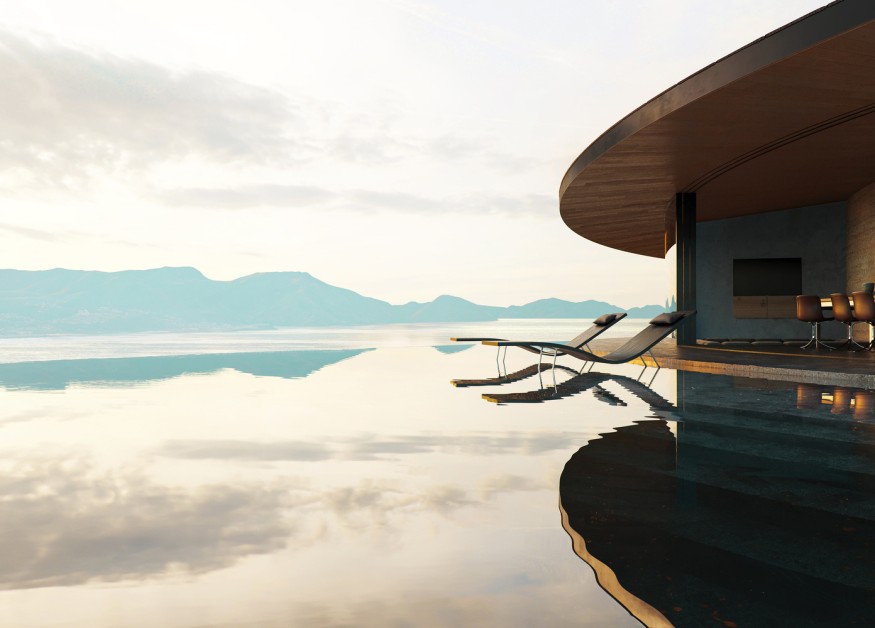BIG Unveils ‘Not A Hotel Setouchi,’ a Meld of Danish and Japanese Influences

Bjarke Ingels Group (BIG) has recently offered a sneak peek into their latest architectural venture, the "Not A Hotel Setouchi" project in Japan. This project combines Danish and Japanese architectural elements to create a harmonious combination of design and functionality. With a view of the Seto Inland Sea and set against the picturesque backdrop of Sagi Island in the southwest cape, the project is poised to transform the concept of vacation homes completely. We will examine the subtleties of the design, the inspiration drawn from the surrounding landscape, and the deft integration of Danish and Japanese architectural elements in this piece.

Design Inspiration and Location
The "Not A Hotel Setouchi" project draws inspiration from the surrounding natural beauty and Japanese landscape artworks. Sagi Island is home to the scheme, which makes the most of the stunning views of the Seto Inland Sea to provide residents with a peaceful and engaging environment. The project gains a distinctive dimension from the combination of Danish and Japanese architectural styles, which results in a design language that is both modern and culturally diverse.

Architectural Features
The project comprises three distinct holiday villas organized around a central courtyard. Each villa is adorned with tiled roofs, paying homage to traditional Japanese architecture. BIG published some sneak peek photos highlighting how these residences are integrated into the verdant surroundings and connected by a system of winding roads. The textured walls, large roof overhangs, and expansive glass facades achieve a smooth transition between the built environment and nature.
Notable features of each holiday home include spacious bedrooms with panoramic views, textured walls that add depth and character, and expansive glass facades that blur the boundaries between indoor and outdoor spaces. An infinity pool on a patio facing the Seto Inland Sea adds a touch of luxury and relaxation, inviting residents to immerse themselves in the stunning natural surroundings.

Exploring Similar Projects
BIG's "Not A Hotel Setouchi" project follows their previous endeavors, such as "Not a Hotel Ishigaki" on Ishigaki Island, unveiled by architect Sou Fujimoto in 2022. This resort hotel, integrated seamlessly into the landscape, features an undulating roof covered in vegetation. Time-shares encourage a more flexible, location-independent way of living by enabling "owners" to own properties anywhere in the world.
BIG's commitment to sustainable design is evident in their master plan for "Gelephu," a new economic center in Bhutan, designed with a focus on Gross National Happiness and adhering to Bhutan's status as the world's first official carbon-negative country. The studio's versatility is further demonstrated with their recent unveiling of the stage design for the world tour of WhoMadeWho, a Danish band. Completing the long-awaited Kaktus Towers in central Copenhagen, as showcased in recent images, further solidifies BIG's position in the global architectural landscape.
BIG's "Not A Hotel Setouchi" project represents a convergence of cultures and design philosophies, creating a unique space where Danish and Japanese architectural influences coexist. The beautiful natural surroundings and the flawless integration of these elements promise a vacation experience that goes above and beyond expectations. The "Not A Hotel Setouchi" project is evidence of BIG's dedication to designing environments that reflect cultural diversity and contribute to a more sustainable and peaceful world, even as they continue to push boundaries with their inventive designs.
From Digital Models to 3D-Printed Homes: Jaspreet Kaur Lall Explains How the Innovation Changes the Construction Industry

Future Belongs to Green Construction: Sampath Kumar Paspunoori Explains One of the Key Trends in the Construction Industry

Kamala Harris' Campaign Ad Uses Iconic Visuals from Carrie Mae Weems to Connect with Voters

Historic Ancient Roman Ruins in Baalbek Remain Strong After Israeli Air Strikes; Locals Seek Cultural Protection

4 Ways to Honor Departed Loved Ones in Your Home Design














